.
You are on the run and as night falls, your body screams for rest. Without a tent, how will you be able to sleep or even rest for a few hours? Many backpackers tend to go without any tent to eliminate added wait to their carry-on load. Outdoor enthusiasts do so without any tent to get in touch with nature. But how does one fight head to head with the wet or the cold or on another extreme, the heat? With no roof above your head or walls to protect you from the cold, is there really a way to rest out there in the wild without a tent? When thinking of getting ready for the inevitable, these tips to sleeping outside without a tent in case of emergencies will help.
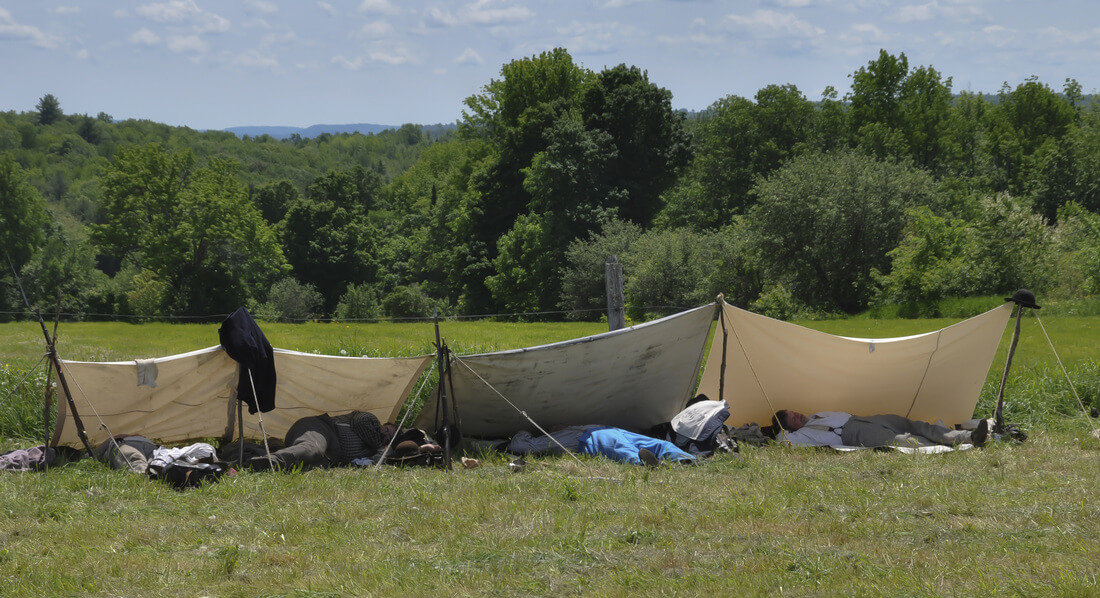
Source : 7thtennessee.com
1. First things first– focus on the time of setting up your non-tent shelter. Do not wait for sundown when you do so. When there’s still light, it is easier to do ocular inspection and assess safety of your desired location. It will also give you firsthand information on what available elements are available for you to use.
2. Choose your shelter’s location wisely. As much as possibly, prioritize safety over comfort. If the weather is wintry cold, look for areas where there’s enough cover to keep elements off you. If its too hot, look for a more open area to take advantage of wind circulation. Remember to have adequate shade though to protect you during daytime. Be wary, too, of existing wildlife and the danger they can impose on you in the wild.
3. Choose your “bed”. When you have already decided on the location and have cleared any form of hazard, threat or risks of injury, it is time to choose what type of accommodation to prepare. Here are some fitting options when resting in the wild.
Ground Hog. Perhaps, you may have brought with you a Mylar-type emergency blanket. With this, you can virtually get holed up anywhere you want. Simply choose your space and snooze on. Awesome view of the stars and the moon. This is not appropriate when its raining or snowing though.
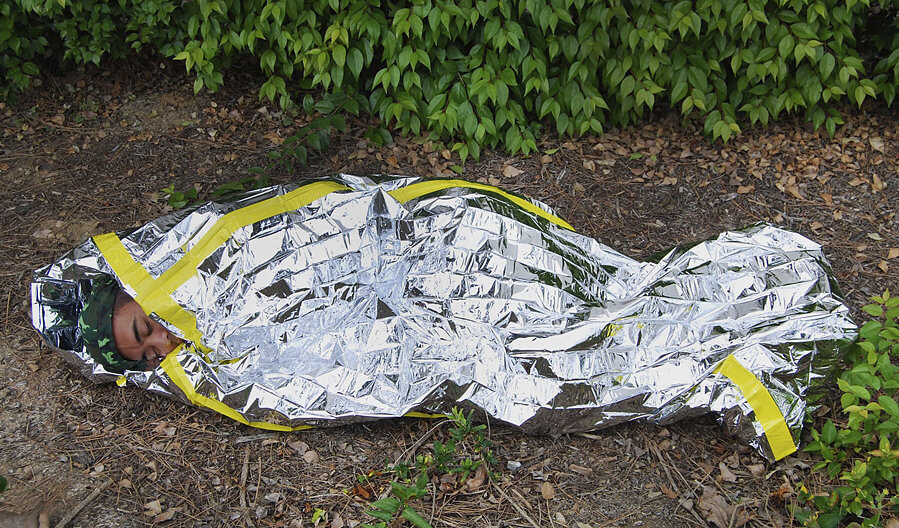
Source : colesarmysurplus.com
Caterpillar You. Make good use of the wilderness’ thick foliage when you’re trapped in the wild by making a “swamp bed”. Pile up leaves, branches, straw, grasses, pine needles, or any soft vegetation to recreate a mattress. Use large ones as makeshift roof to protect you from the rain or dew. Simply cover with a blanket on top then, add a source of heat on the sides and you’re in for a good night’s sleep.
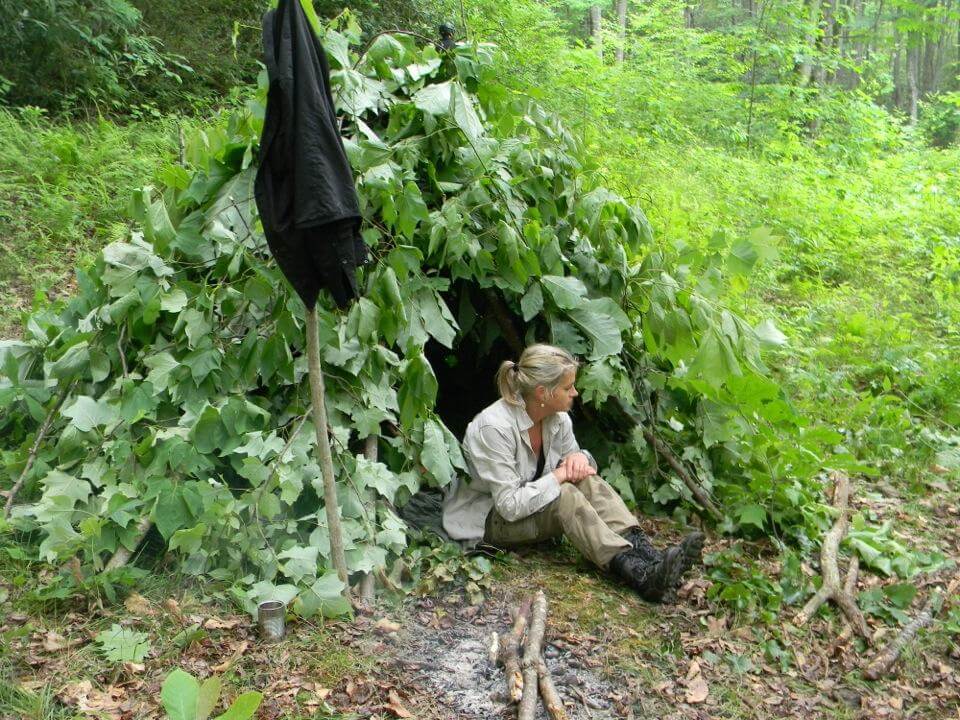
Source : survivallife.com
The premise of these two emergency shelters rests on one thing– making good use of whatever you have at hand. You can sleep on a mat, an Earth pad, a bivouac sack, a makeshift bed made from branches with roof made of leaves, or simply cover yourself with a raincoat and drop to the ground. Some may even just lean on trees to rest for an hour or two.
Rock-A-Bye. Another excellent shelter is a hammock. This swinging bed structure takes you off the cold or wet ground, the water or the prowling creatures down below by ensconcing you on top. All you need to do is find perfectly spaced trees to rig it up, knot-tying skills, and low wind.
The Bivvies. Bivvy bag or shelter alike are awesome emergency shelters. More lightweight and more compact than a tent, it works awesomely in keeping you warm and dry. Always have one stowed in your bugout bag just in case.
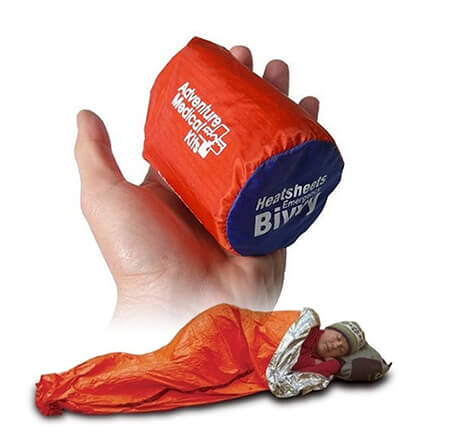
Source : fusiongear.com.au
Tarp Your Way. Another less expensive way is to make use of an old tarp or any strong waterproof sheep on that matter. You can create a tent-like structure. Or simply make a bed sheet out of it when roughing it up in the wild.
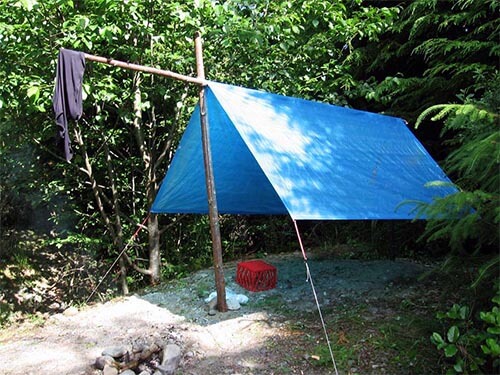
Source : blog.cheaperthandirt.com
The Caveman. Afraid of the wintry spell? Create a snow cave then. A shelter like the one below can keep you warm even for a short time. At the very least, it will allow you rest as you find your way to safety.
4. Safety precaution though. Always make sure to have fire-making instruments and anti-bug repellant with you wherever you go. The former can provide warmth and deflect intruders in the dark. The latter prevents mosquitoes and other bugs from torturing you when it gets dark.
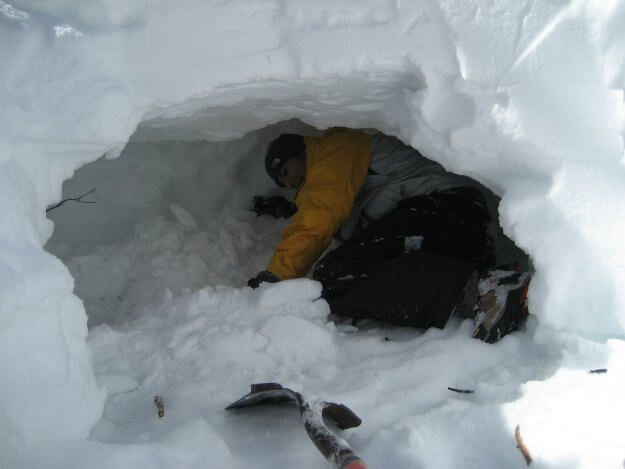
Source : survivallife.com
The Bottom Line
Emergency or not, always have these things handy when out in the wild — bug net, tarp, waterproof Mylar sleeping bag or an Earth pad, a rope or a paracord, a hammoc, stakes, poles, jungle knife or multi-tool, and digging stuff. These items allow you to create makeshift shelter from scratch out of anything out there in the wild. Now take these tips to sleeping outside without a tent in case of emergencies to mind to guarantee your safety and that of your loved ones.


Leave a Reply
You must be logged in to post a comment.